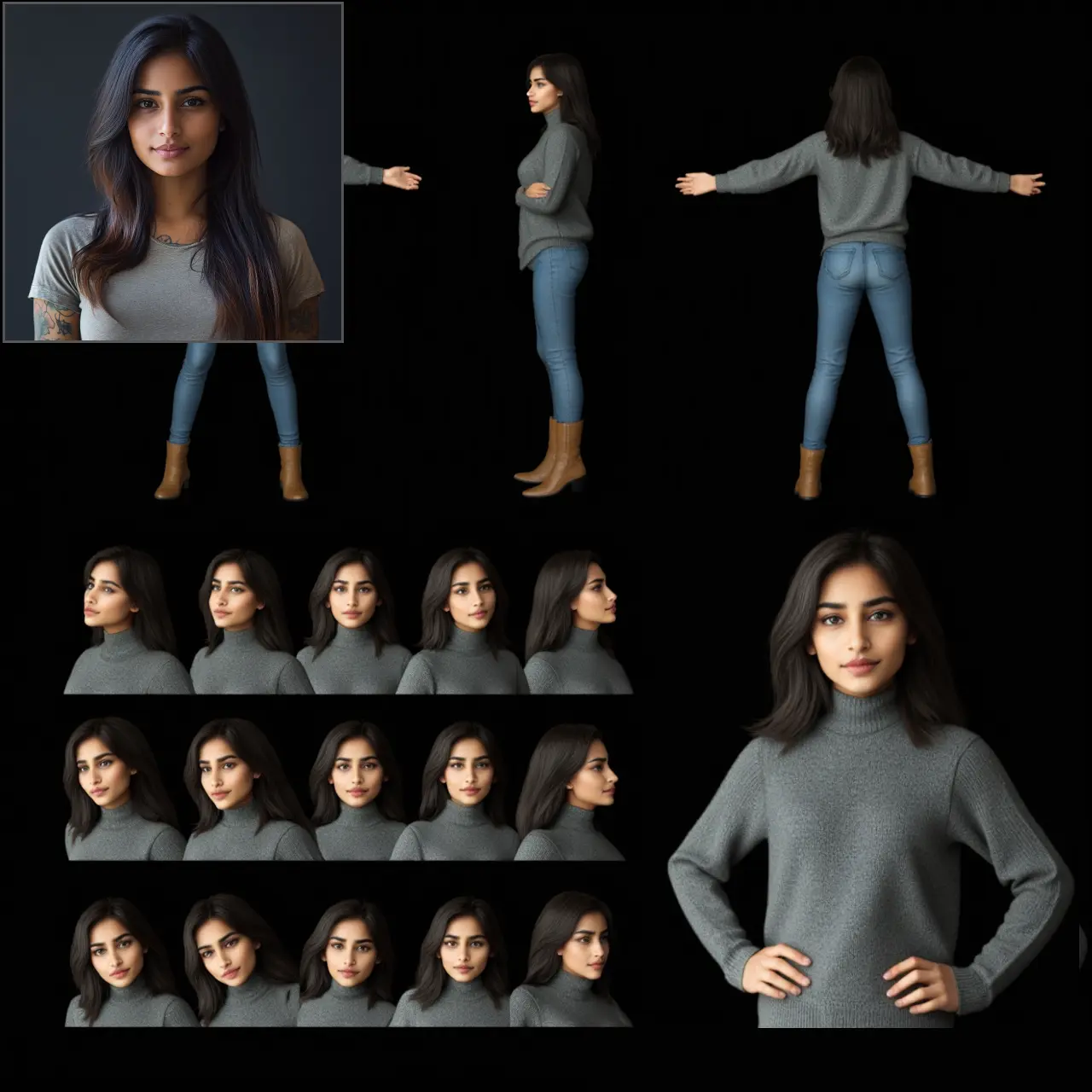ComfyUI Node: Geowizard Model Loader
geowizard_model_loader
CategoryGeowizard
kijai (Account age: 2467days) Extension
Geowizard depth and normal estimation in ComfyUI Latest Updated
2024-12-16 Github Stars
0.11K
How to Install Geowizard depth and normal estimation in ComfyUI
Install this extension via the ComfyUI Manager by searching for Geowizard depth and normal estimation in ComfyUI- 1. Click the Manager button in the main menu
- 2. Select Custom Nodes Manager button
- 3. Enter Geowizard depth and normal estimation in ComfyUI in the search bar
Visit ComfyUI Online for ready-to-use ComfyUI environment
- Free trial available
- 16GB VRAM to 80GB VRAM GPU machines
- 400+ preloaded models/nodes
- Freedom to upload custom models/nodes
- 200+ ready-to-run workflows
- 100% private workspace with up to 200GB storage
- Dedicated Support
Geowizard Model Loader Description
Facilitates loading and initializing Geowizard model in ComfyUI for efficient processing tasks and optimization.
Geowizard Model Loader:
The geowizard_model_loader node is designed to facilitate the loading and initialization of the Geowizard model within the ComfyUI framework. This node is essential for setting up the model with the appropriate configurations, ensuring that it is ready for processing tasks such as image analysis and domain-specific operations. By leveraging this node, you can efficiently manage model loading, including setting the model's data type, scheduler, and other critical parameters. This node simplifies the process of preparing the model for use, making it accessible even to those without a deep technical background, and ensures that the model is optimized for performance and accuracy.
Geowizard Model Loader Input Parameters:
geowizard_model
The geowizard_model parameter specifies the model to be loaded. This is a critical input as it determines the specific model architecture and weights that will be used for processing tasks. The model should be compatible with the Geowizard framework and pre-trained for the intended application. There are no specific minimum or maximum values for this parameter, but it must be a valid model object.
image
The image parameter represents the input image that the model will process. This image serves as the primary data for the model to analyze and generate outputs. The image should be in a format supported by the model, such as JPEG or PNG. There are no specific constraints on the image size, but larger images may require more computational resources.
domain
The domain parameter defines the specific domain or context in which the model will operate. This could include various fields such as medical imaging, satellite imagery, or other specialized areas. The domain setting helps tailor the model's processing to the specific characteristics and requirements of the given field. There are no predefined values for this parameter, but it should be a string that accurately describes the domain.
ensemble_size
The ensemble_size parameter determines the number of models to be used in an ensemble approach. An ensemble of models can improve the robustness and accuracy of the results by combining the outputs of multiple models. The minimum value for this parameter is 1, and there is no strict maximum, but larger ensemble sizes will require more computational resources. The default value is typically 1.
steps
The steps parameter specifies the number of processing steps the model should perform. This can affect the quality and detail of the output, with more steps generally leading to more refined results. The minimum value is 1, and the maximum value depends on the model's capabilities and the available computational resources. A typical default value might be around 50.
seed
The seed parameter sets the random seed for the model's operations. This is important for ensuring reproducibility of results, as the same seed will produce the same output given the same inputs. The seed should be an integer value, with no specific minimum or maximum, but it is often set to a default value such as 42.
scheduler
The scheduler parameter defines the scheduling algorithm to be used by the model. The scheduler can impact the efficiency and performance of the model's processing. Common options might include different types of learning rate schedulers or optimization algorithms. The exact options available will depend on the model and framework being used.
keep_model_loaded
The keep_model_loaded parameter is a boolean flag that indicates whether the model should remain loaded in memory after processing. Setting this to True can save time if the model will be used repeatedly, but it will consume more memory. The default value is typically False.
Geowizard Model Loader Output Parameters:
model
The model output parameter represents the loaded and initialized Geowizard model. This output is crucial as it provides the ready-to-use model that can be passed to other nodes or processes within the ComfyUI framework. The model is configured based on the input parameters and is optimized for the specified domain and tasks.
Geowizard Model Loader Usage Tips:
- Ensure that the
geowizard_modelparameter is set to a valid and compatible model object to avoid loading errors. - Use the
seedparameter to ensure reproducibility of your results, especially when experimenting with different configurations. - Adjust the
ensemble_sizeparameter to balance between accuracy and computational resource usage; larger ensembles can provide better results but require more processing power. - Set the
keep_model_loadedparameter toTrueif you plan to use the model multiple times in a session to save on loading times.
Geowizard Model Loader Common Errors and Solutions:
Model loading failed
- Explanation: This error occurs when the specified
geowizard_modelcannot be loaded, possibly due to an invalid model object or incompatible model file. - Solution: Verify that the
geowizard_modelparameter is set to a valid model object and that the model file is correctly formatted and compatible with the Geowizard framework.
Image format not supported
- Explanation: This error indicates that the input
imageis in a format that the model does not support. - Solution: Ensure that the input image is in a supported format such as JPEG or PNG. Convert the image to a compatible format if necessary.
Invalid domain specified
- Explanation: The
domainparameter is set to a value that the model does not recognize or support. - Solution: Check that the
domainparameter accurately describes the intended field of application and is a valid string. Refer to the model documentation for supported domains.
Insufficient computational resources
- Explanation: The specified
ensemble_sizeorstepsparameter values require more computational resources than are available. - Solution: Reduce the
ensemble_sizeorstepsvalues to fit within the available computational resources. Consider using a more powerful machine if higher values are necessary.
Scheduler not found
- Explanation: The
schedulerparameter is set to a value that does not correspond to any available scheduling algorithm. - Solution: Verify that the
schedulerparameter is set to a valid scheduling algorithm supported by the model. Refer to the model documentation for a list of valid schedulers.
Geowizard Model Loader Related Nodes
RunComfy is the premier ComfyUI platform, offering ComfyUI online environment and services, along with ComfyUI workflows featuring stunning visuals. RunComfy also provides AI Models, enabling artists to harness the latest AI tools to create incredible art.



